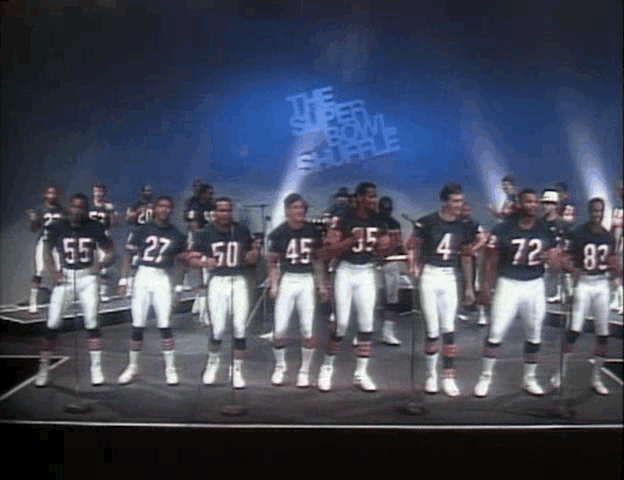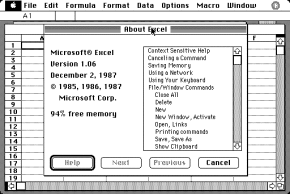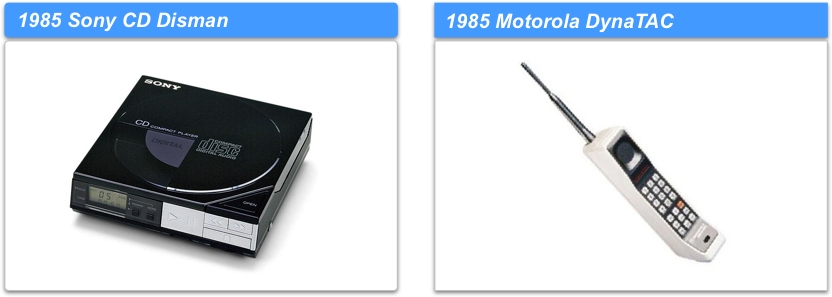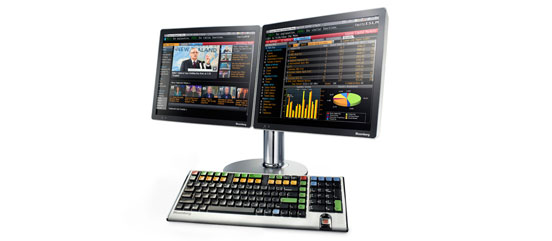- Excel in 1985 and its impact on financial modeling
- What's changed after 30 years
- Financial data provider's role in fintech innovation
- Why the next 30 years look promising
Being a Chicago native, I always knew 1985 was an important year for millions of people but not because it was when Microsoft released its first version of Excel. It’s because that was the year of the Chicago Bears’ Super Bowl shuffle.

However, it wasn’t the '85 Bears that were destined to dominate the competition for the next 30 years. That’s right… I’m referring to Microsoft’s spreadsheet software that recently turned the big 3 - 0!
I thought that was interesting when I first came across this fun fact in a GeekWire article. This got me thinking about the history of Excel and its impact on my financial modeling relationship. A relationship that has had its upsides and downsides (swear that’s the only pun in this post). However, being 2 years younger than the app itself, I obviously had to do a little research.
Excel for 30 years
One interesting tidbit I picked up was, ironically, Bill Gates pushed to have the spreadsheet be developed for Apple’s Macintosh as opposed to it’s own Windows operating system that Microsoft was building at the same time. These were the two key projects that would likely determine the fate of the company so like any smart investor, Bill didn’t want all his eggs in one basket.
Since the release of Excel 1.0 in 1985, there’s been numerous feature additions and vast improvements in computing power. However, the image below of version 1.06 generally looks similar to the layout today.
 For reference, here’s a helpful infographic of Excel’s history.
For reference, here’s a helpful infographic of Excel’s history.
There’s no denying Excel has substantially improved valuation modeling capabilities since its inception. But how much has it improved in the last 10 years? Or even in the last 20 years? In reality, there hasn’t been any meaningful change in the way valuation models are built, maintained or shared. This is surprising when considering the technological improvements that have taken place since 1985. Can you still imagine listening to music on your Sony CD Discman or calling up a friend on your Motorola DynaTAC cell phone?

With the numerous technological advances in the last 30 years, why haven’t we seen any improvements in the way we interact with financial models? Although this market is unquestionably smaller than the telecommunication or entertainment industry, financial modeling is still a weekly (if not daily) routine for millions of people.
The Unbundle Revolution
The best way to explain why innovation in financial modeling has been lacking, specifically as it relates to stock valuation, is by highlighting a recent confrontation between Verizon and Disney. In short, Verizon wants to offer two separate sports packages for its FIOS service. This would involve "unbundling" (or splitting up) Disney’s ESPN and ESPN2 television networks. Disney is obviously against the idea because countless customers would ultimately decide they only wanted to pay for ESPN, Disney’s flagship network. FCC chairman Kevin Martin has highlighted the issue more directly:
"The average cable subscriber was paying for more than 85 channels that she didn’t watch in order to obtain the approximately 16 channels that she does."
Consumers hate paying for anything they don’t use - which is perfectly reasonable. The reason I highlight this is because the unbundling effect has finally manifested itself in the financial data industry within the last few years. Previously, you would have to dish out over $24,000 a year for a Bloomberg Terminal (one subscription) if you wanted access to quality financial data. Even if you only wanted to use 10% of the data, you would still have to pay the full subscription price! Similar to the cable industry, all the data comes bundled in one package.

Only a number of financial institutions and family offices are able to afford the $24K annual price tag - actually, 315,000 to be exact according to this yahoo finance article. Although I doubt many homes have a Bloomberg Terminal, this figure would represent less than 1% when compared to the estimated 50 million households (US only) that engage in retail investing according to the Investment Company Institute and the Securities Industry Association. Is it just a coincidence that 1% of the world’s population now owns 50% of its total wealth? (Source: Credit Suisse)
Bloomberg’s business model hasn’t changed over the years but fortunately for the 99%, there’s been an emergence of new data providers that now make it possible to pay for only what you need. This “unbundling revolution” in the financial data industry is a fairly new development that has opened the door for thousands of new fintech businesses (finbox.io being one of them) and has sparked innovation in an industry that had been lacking it for years. Checkout out fintechinnovators.com to see more exciting firms.
Disruption Will Often Follow Innovation
We’re now witnessing new firms challenge old incumbents: Robinhood being a great example. Robinhood is challenging the old brokerage house business model by offering commision-free stock trades. Before the app even launched, they were able to grow their sign-up list to over a million people (potentially 2% of US retail investing accounts). What’s maybe even more impressive is that 25% of their users are first time investors according to this Huffington Post Article.
So What’s Next?
Financial technology and its offerings have drastically improved just within the last few years. The cost of stock trading has gone to virtually zero. Unbundled financial data is now readily available for all at reasonable prices. There’s thousands of first time investors entering the market. So what’s next? Back to Excel? Wait… what? All this innovation and excitement that’s emerging in finance leads back to a spreadsheet application from 1985?
We’ve interviewed hundreds of retail investors, wealth managers, hedge fund analysts and bankers and the one constant they all come back to is our 30 year old friend ~ Mr. Excel. Whether discovering a new investment opportunity or monitoring a current position, countless hours continue to be spent in Excel. And while financial innovation seems to finally be improving all around us, the one thing that hasn’t changed has been the inefficient process of building, updating, monitoring and the overall way we interact with financial models. But now we at least understand why. It just wasn’t possible. And now it is!
![]() Welcome finbox.io....
Welcome finbox.io....


